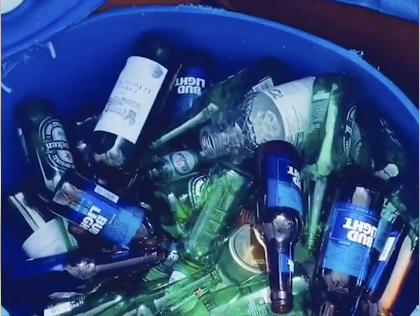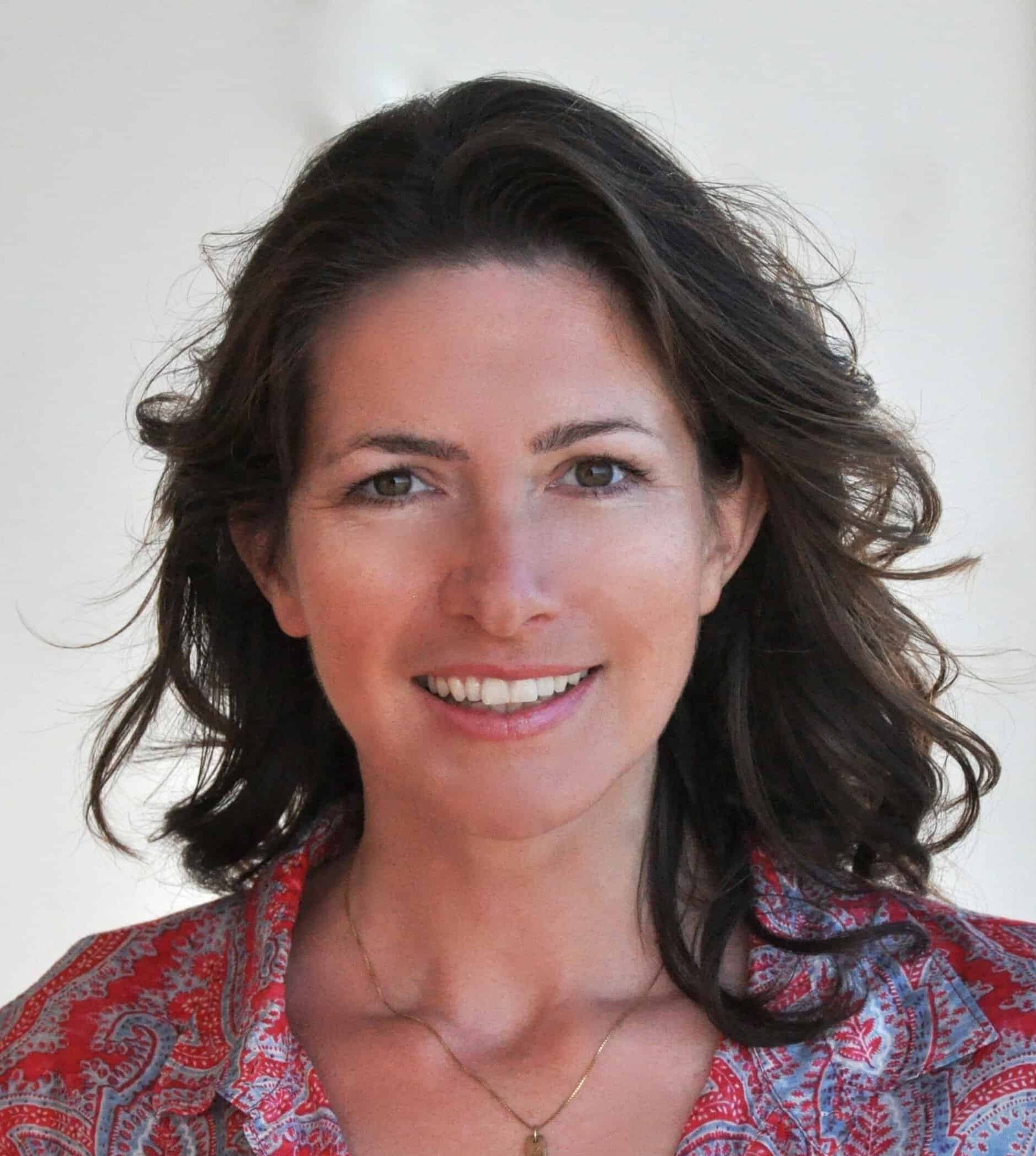Most ideas that start over a bottle of wine don’t go anywhere, but this one is different. Two Tulane University seniors in New Orleans, Franziska Trautmann and Max Steitz, were drinking wine in their dorm when they started lamenting the fact that the bottle would end up in landfill after they threw it in the trash. Trautmann, whose father immigrated to the US from rural Germany before she was born, had visited his home country and observed that Germany had a nationwide glass recycling program. Louisiana didn’t.
“So we decided to be a part of the solution,” Trautmann says matter-of-factly via Zoom from her office in New Orleans.
With the moxie of youth, they simply started collecting glass bottles from fellow students and friends. After a local paper reported on their mission, the heaps of glass in their backyard grew so fast that they soon crowdfunded $18,000 for a professional machine to pulverize glass into sand. “That’s when we got really fired up,” Trautmann says, “because people obviously cared about this.”
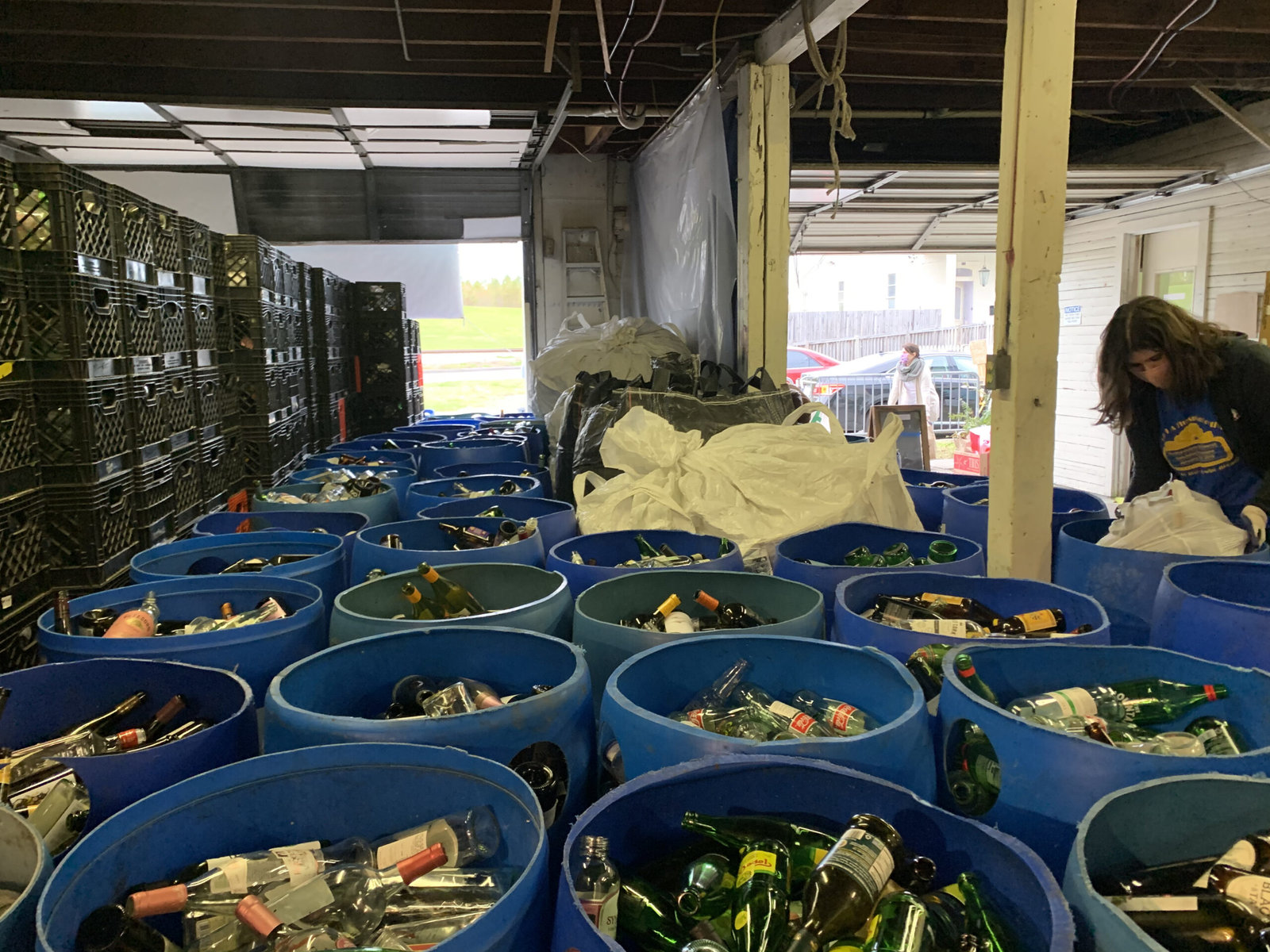
Fast forward from their humble start in February 2020 to today, Steitz and Trautmann, both 25 years old, recycle about 100,000 pounds of glass every month at Glass Half Full Nola, a low-profit limited liability company whose primary purpose is to achieve a social benefit. So far, they have diverted 3.2 million pounds of glass from landfills with just eight employees.
They no longer collect the glass in their backyard, but have moved into a professional 40,000-square-foot facility in August 2020, with its own processing systems, forklifts and containers where the glass is sorted into different colors. Cooperating with a local glass blower and a jewelry designer, Andrew Barrows and Travis Laurendine, they started a jewelry shop, Nola Alchemy, that shows off the beauty of recycled glass that has been crafted into amulets and beads. “We’re essentially turning trash into treasures,” Trautmann says.
Much of the rest gets blasted into sand that can be used for landscaping and other purposes. “I didn’t even know at the beginning that the main component of glass is silica, essentially sand!” Trautmann says, shaking her head. “When a hurricane is forecasted, we give burlap bags filled with glass-sand to residents for flood protection.”
Crushed by negative news?
Sign up for the Reasons to be Cheerful newsletter.Glass Half Full has 12 glass collection containers throughout the city of New Orleans. They only ask the locals to clean the glass containers of food scraps before tossing them in; they don’t need to remove labels and caps, “because the machine is able to separate the caps from the glass,” Trautmann explains. Restaurants and other businesses can pay Glass Half Full to pick up their glass waste. Currently, 70 businesses have signed up, and 300 are on the waitlist as the young founders are scaling up. The enterprise does not turn a big profit, but according to Trautmann, they break even every month.
The problems Trautmann and Steitz are addressing are quite monumental: Each year, Americans throw away eight million tons of glass, a bulky part of landfills that can last centuries. The Environmental Protection Agency reports that less than a third of glass in the US gets recycled. And while more and more communities ban single-use plastic, glass bottles are only more environmentally friendly than plastic bottles if they get reused.
Other countries take recycling more seriously. Germany has a deposit system where breweries and other manufacturers take their containers back to clean and refill them. Before Germany introduced a mandatory markup of 25 cents to most containers in 2003, some three billion disposable beverage containers were dumped every year. Now, customers get the deposit refunded when they return the containers (which they can easily do in most supermarkets), and the country boasts a return rate of above 98 percent and a glass recycling rate of 76 percent.
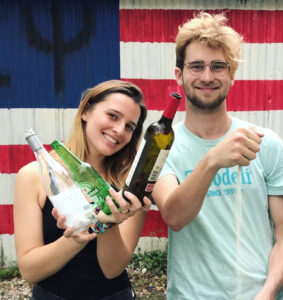
Sweden has the best recycling rate of glass in the world. A highly centralized system ensures a 94 percent recycling rate as every glass container collected in the country is sent to one processing plant. Children in countries like Germany and Sweden are trained from young ages onward to recycle bottles, and collection containers are ubiquitous.
In the US, most citizens who don’t happen to live in a community that offers glass recycling need to start their own initiative like Trautmann and Steitz did. The founders initially thought they would collect most glass bottles from restaurants and bars but after Covid led to the closure of most pubs, they had to change course. “We had to be flexible,” Trautmann remembers. “In the end, Covid probably helped us because the bars were closed and most people drank at home. They had the time to collect the bottles and bring them to us, and most probably realized for the first time how much glass they use.”
In Kansas City, the Boulevard Brewing Company saw a similar issue of a precious resource being wasted. “In 2009, Kansas Citians threw away 150 million pounds of perfectly good glass,” the brewers note on their website. With the support of local companies and community organizations, they started Ripple Glass, distributed glass recycling bins throughout the metro area and built a processing plant. They repurpose the glass for fiberglass insulation and other uses.
A Rotary Club in Washington State wine country also pulverizes collected glass bottles into colorful sand for landscaping, playgrounds and water filters. So far, the 911 Glass Rescue Project has saved 320,000 pounds from landfills.
In Santa Fe, New Mexico, a married couple, Chris Bogle and Shelby Kaye, started Broken Arrow, a closed-loop system for glass recycling. Bogle is a glassblower and Kaye a trained sculptor. Together they use the recycled glass for creating handblown barware and art, but they also offer it to landscapers and gardeners. All true glassroots efforts.
The founders of Glass Half Full, though, found a particularly urgent need: They are using the glass to restore New Orleans’ shrinking coastline. In the last decades, Louisiana has lost roughly the size of the state of Delaware, from its eroding beaches and marshes, and continues to lose the size of a football field every half hour due to erosion, hurricanes and rising sea levels.
Together with the Pointe au Chien Indian Tribe and Tulane University, with funding from the National Science Foundation, Trautmann and Steitz are working to restore some of the marshes at the Big Branch Marsh National Wildlife Refuge on the north shore of Lake Pontchartrain as part of their ReCoast initiative with the Coalition to Restore Coastal Louisiana (CRCL). There is actually a global sand shortage, and efforts to restore coastlines often involve dredging, which impacts ecosystems. Bolstered by a $5 million grant from the National Science Foundation, scientists conducted tests to make sure the glass-sand is not harming the environment and no chemicals are leaching into the flora. Turns out that the natural sediment found along the Mississippi River Delta and most beaches along the Gulf Coast is mostly silica, just like the recycled glass.
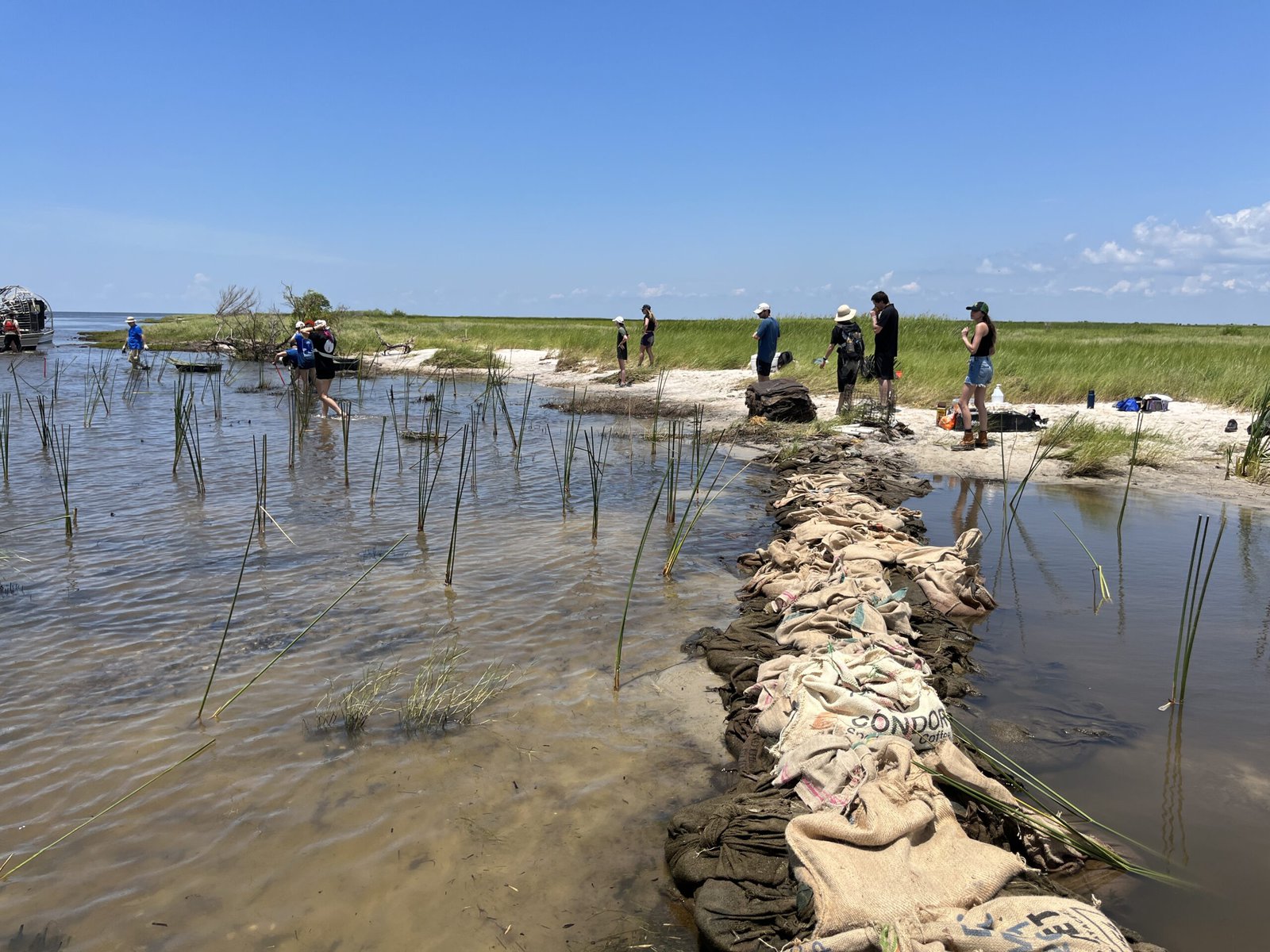
So far, Glass Half Full has used 20 tons of glass each for two wetland restoration projects, including a wall with sand-filled burlap bags to trap sediment and help the fauna regrow. “In four short months, you can already see the huge accretion of sand and soil,” the initiative reports. “The bulrush, typha and other marsh grasses are thriving in the newly created marshland!”
The conservationists are now looking into other areas along the Louisiana coast that might benefit from sand restoration, as the first project nationwide to do coastal restoration with recycled glass.
Trautmann and Steitz say they are proof that any individual can do something about climate change if they engage with their community. Needless to say they are doing great work. Or, more accurately, they are crushing it.






